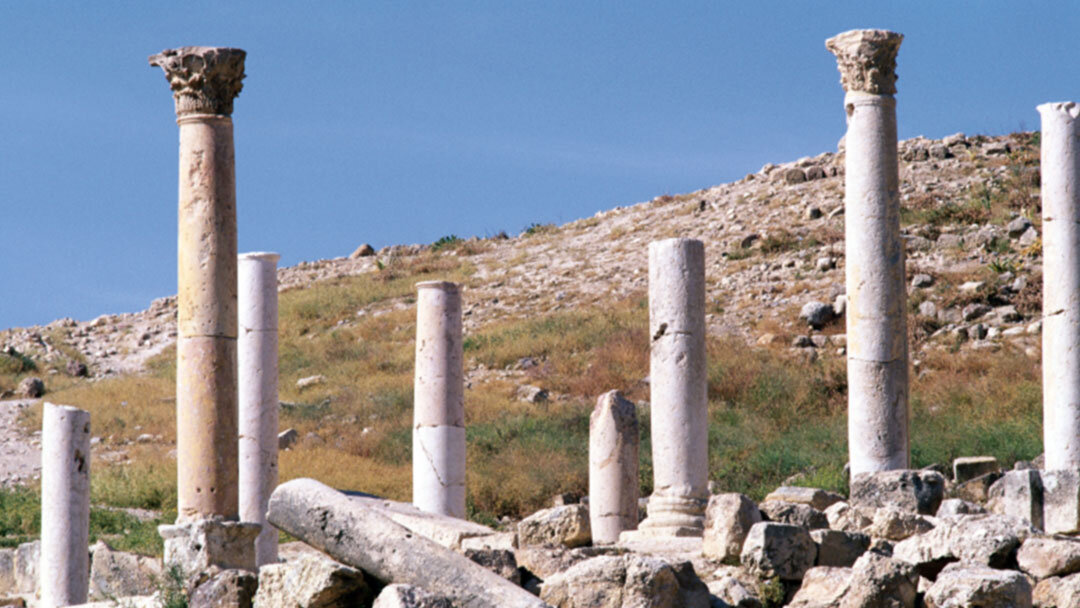Pella is a favourite of archaeologists as it is exceptionally rich in antiquities, some of which are exceedingly old. Besides the excavated ruins from the Graeco-Roman period, including an Odeon (theatre), Pella offers visitors the opportunity to see the remains of a Chalcolithic settlement from the 4th millennium BC, the remains of Bronze and Iron Age walled cities, Byzantine churches and houses, an Early Islamic residential quarter, and a small medieval mosque.
In the midst of the Jordan Valley are the ruins of the ancient city of Pella (Taqabat Fahl), one of the 10 cities of the fabled Roman Decapolis. Although not as spectacular as Jerash, Pella is far more important to archaeologists as it reveals evidence of 6000 years of continuous settlement. In fact, it’s regarded as the most historically significant site in all Jordan.
Centred on a large tell and surrounded by fertile valleys that together comprise a rich watershed, Pella has fostered human civilisation from the Stone Age to medieval Islamic times.
Many of the ruins are spread out and in need of excavation, so some walking and a bit of imagination are required to get the most from the site. Unlike Jerash, which overwhelms visitors with its monumental grandeur, Pella is harder to visualise but the superb setting just above the Jordan Valley rewards can be reward enough, particularly when the land blooms in spring.

